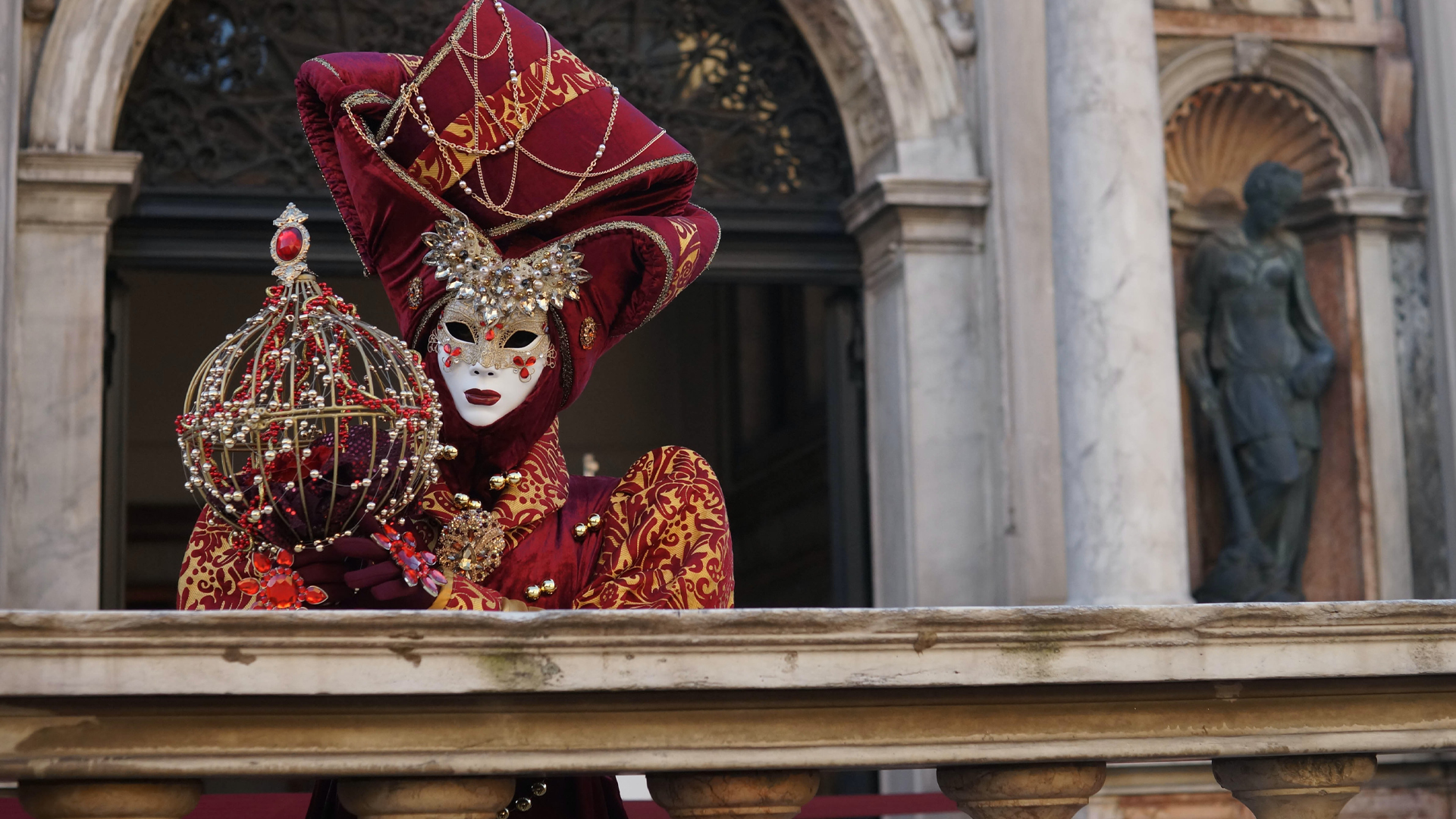Carnevale di Venezia (The Venice Carnival) is an annual festival known around the world for its elaborate masks. It is one of the oldest festivals in the world, taking place each year in February. The carnival begins two weeks before Ash Wednesday and ends on Shrove Tuesday, also known as Fat Tuesday (Martedì Grasso or Mardi Gras), which is the day before the start of Lent.
According to legend, this festival began after the victory of the Venetian Republic over the Patriarch of Aquileia in 1162. In honor of this victory, Venetians danced and gathered in Piazza San Marco.
Masks, or maschere, are synonymous with Carnevale. The tradition of mask-wearing started in the 13th century when Venetians held parties from December 26th until the start of Lent. They wore elaborate masks to conceal their identities. These parties were the only time when the lower and upper classes could socialize together.
Over the centuries, Carnevale has evolved with elaborate costumes, masked balls, and parades. During the Venetian Renaissance, around the 14th and 15th centuries, the Compagnie della Calza, a group of young noblemen, organized theatrical performances, private balls, serenades, regattas, fireworks, and processions on the water to welcome their aristocratic guests.
Under the rule of Francis II, the festival was outlawed, and in 1797 the use of masks became forbidden. It reappeared in the nineteenth century for private feasts, where it became an occasion for artistic creations.
In the 1930s, the Venice Carnival was banned by the fascist government. Fortunately, the carnival returned in 1979. The redevelopment of masks was begun by Venetian college students for the tourist trade.
The origin of the word Carnevale
The word ‘carnival’ or ‘carnivale’ in Italian is said to be from the Latin words ‘carnem levare’ or ‘carnelevarium’ which means to take away or remove meat. It could also be from the Latin words ‘carne vale’ (farewell to meat.)
Anti-mask law in Venice
The earliest documented mention of people wearing masks dates back to 1268. The original masks were simple in design and decoration. They often had a symbolic or practical function. In 1339, the anti-mask law forbade Venetians from wearing disguises, visiting convents while masked, and playing various games by law. The law also prohibited painting one's face or wearing false beards or wigs. Near the end of the Republic, the wearing of masks in daily life was restricted.
When mask laws were lifted, mask makers, known as mascherari, held a special position in society, with their own laws, guild, and statute in 1436.
Masks from the beautiful to the scary
Masks used to have symbolic and functional features. People with different occupations wore different masks. During past Venice Carnivals, the streets of Venice were full of people wearing masks. This enabled them to protect their identity and remove social differences. Masks allowed a wearer to hide his identity during licentious and dissolute activities. Hence the saying, "a Carnevale ogni scherzo vale" (anything goes during Carnevale).
There are several styles of masks worn during the Venice Carnival. These include:
- The bauta is a simple white mask that covers the entire face. Characterized by the inclusion of an overly-prominent nose and no mouth. The mask's beak-like chin is designed to enable the wearer to talk, eat, and drink without having to remove it. The bauta was often accompanied by a red or black cape.
- The Colombina is a half-mask, only covering the wearer's eyes, nose, and cheeks.
- The moretta is a small strapless black velvet oval mask with holes for the eyes, worn by women.
- Medico Della Peste (The Plague Doctor) has a long beak and is one of the most recognizable Venetian masks, though it did not start out as a carnival mask but as a method of preventing the spread of disease.
- Pantalone is a half-mask with an oversized nose like the beak of a crow with slanted eyes.
Carnevale today
Many other Italian towns also hold Carnevale festivals, some with unusual events. In recent times, the city of Venice has put much effort into keeping the tradition alive. Despite disruptions in recent years due to the COVID-19 pandemic, Carnevale remains one of the main tourist attractions in Italy.
Venice's main Carnevale events center around St Mark’s Square, but events take place in every area of the city. The highlight of the festival is the Flight of the Angel. A performer in traditional costume descends from the bell tower of St. Mark's Basilica on a wire. There is also a side event on the first Sunday of the carnival. Svolo della Pantegana is a folkloristic boat parade that begins in Cannaregio and draws a large number of locals.
To experience Carnevale today, former Venice resident and freelance chef, Francesca Mazzocco, advises visitors to “Dress up! And not necessarily with a traditional costume. That is the true spirit of Carnival, being free of doing and wearing what you like. Eat lots of frittelle, the most typical Venetian carnival food. They are fried dough balls you only find in the carnival season.”
Amanda Akien
Amanda Akien graduated from The University of Wollongong, Australia with an MA in Journalism with Distinction. Her writing has appeared in international travel magazines, as well as The Guardian newspaper. Although Amanda is based in the UK, she has traveled throughout Italy, even interning at a major modeling agency during Milan Fashion Week. Her favorite region is Tuscany - she loves Florence and is also partial to a glass of Montepulciano d’Abruzzo!

